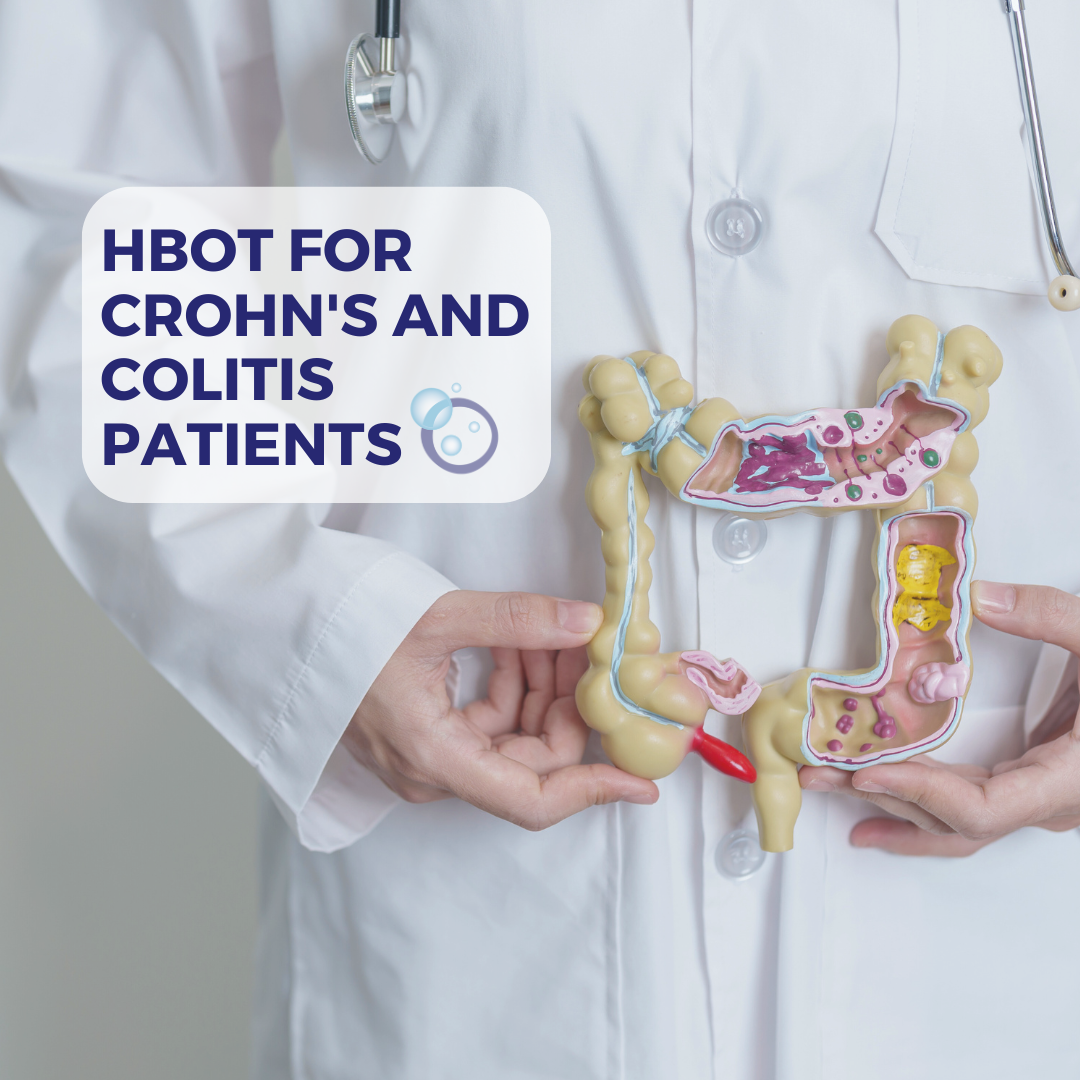
Hyperbaric Oxygen Therapy for Crohn’s and Colitis Patients
Crohn’s disease and ulcerative colitis, collectively known as inflammatory bowel diseases (IBD), are chronic inflammatory conditions of the gastrointestinal tract that can cause debilitating symptoms and significantly impact quality of life. While conventional treatments aim to manage symptoms and reduce inflammation, therapies like hyperbaric oxygen therapy (HBOT) offer hope for patients seeking alternative approaches to managing their condition.
Understanding Crohn’s Disease and Ulcerative Colitis:
Crohn’s disease and ulcerative colitis are autoimmune conditions characterized by inflammation of the gastrointestinal tract. Crohn’s disease can affect any part of the digestive system, while ulcerative colitis primarily affects the colon and rectum. Symptoms may include abdominal pain, diarrhea, rectal bleeding, fatigue, and weight loss, with flare-ups alternating with periods of remission.
The Science Behind Hyperbaric Oxygen Therapy:
HBOT involves breathing pure oxygen in a pressurized chamber, allowing oxygen to dissolve into the bloodstream at higher concentrations. This oxygen-rich environment promotes healing by reducing inflammation, stimulating tissue repair, and enhancing immune function. In the context of Crohn’s disease and ulcerative colitis, HBOT targets inflammation in the gastrointestinal tract, promoting healing of damaged tissues and alleviating symptoms.
Alleviating Symptoms of Crohn’s Disease and Ulcerative Colitis:
HBOT has shown promise in alleviating symptoms associated with Crohn’s disease and ulcerative colitis:
- Reducing Inflammation: Chronic inflammation is a hallmark feature of IBD, contributing to tissue damage and symptom exacerbation. HBOT’s anti-inflammatory properties help dampen the inflammatory response, reducing inflammation in the gastrointestinal tract and promoting healing of inflamed tissues.
- Promoting Tissue Repair: Both Crohn’s disease and ulcerative colitis can cause ulceration and tissue damage in the gastrointestinal tract. HBOT stimulates angiogenesis (formation of new blood vessels) and enhances collagen production, supporting tissue repair and regeneration in affected areas.
- Enhancing Immune Function: Dysregulation of the immune system is implicated in the pathogenesis of IBD. HBOT enhances immune function by increasing oxygen delivery to immune cells, improving their ability to combat infection and modulate inflammatory responses.
- Improving Symptoms and Quality of Life: By targeting inflammation and promoting tissue repair, HBOT can help alleviate symptoms such as abdominal pain, diarrhea, and fatigue, improving overall quality of life for patients with Crohn’s disease and ulcerative colitis.
Clinical Evidence and Case Studies:
While research on HBOT for IBD is still emerging, several studies and case reports support its efficacy. A pilot study published in the journal Gut found that HBOT reduced inflammation and improved clinical symptoms in patients with ulcerative colitis. Additionally, anecdotal evidence from IBD patients treated with HBOT highlights significant symptom improvement and enhanced quality of life.
Incorporating HBOT into IBD Treatment Plans:
HBOT should be viewed as a complementary therapy in the management of Crohn’s disease and ulcerative colitis, alongside conventional treatments such as medication, dietary modifications, and lifestyle changes. Collaboration between gastroenterologists, IBD specialists, and HBOT clinicians is essential in developing individualized treatment plans tailored to the unique needs of each patient.
Hyperbaric oxygen therapy holds promise as a non-invasive and potentially effective therapy for managing symptoms and promoting healing in patients with Crohn’s disease and ulcerative colitis. By integrating HBOT into comprehensive treatment plans, clinicians can offer patients new hope and improved quality of life in their journey with Crohn’s disease and ulcerative colitis.